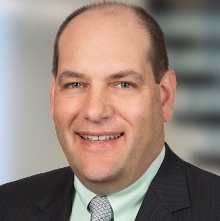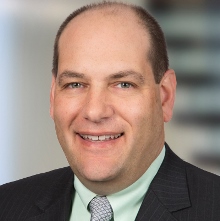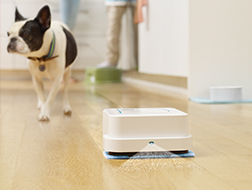
Neil P. Ferraro brings a unique perspective to his work as a patent attorney. He is a former mechanical engineer that also holds five product patents for work that was done with an engineering employer. This experience shapes the interactions he has with inventors every day since he knows what it’s like to be in their situation. By knowing the right questions to ask, he helps them establish the right framework to effectively define and enhance the overall value of their IP.
In his group practice, Neil represents clients ranging from start-ups to large corporations in wide-ranging technologies including medical devices, sports equipment, consumer products, imaging systems, engines and automotive components.
Q&A With Neil P. Ferraro
What’s the back story on your years of experience as a mechanical engineer?
In college, I had a budding interest in patent law but decided to work in industry to learn how to put my engineering education to use. I use that experience every day when I speak with engineers and scientists regarding their innovations. I’m able to quickly understand their technology, the issues they face and the solutions they are providing.
Why did you make the career transition from an engineer to patent attorney?
I knew early on that I wanted to focus on cutting edge technology areas but did not necessarily want to be the person engineering the solutions. So, having in the back of my mind the earlier interest I had in helping inventors protect their intellectual property, I decided to make the transition. I found the intersection of technology and the law to be fascinating. I am able to continue to use my engineering background but in a new way. You hold five product patents.
How does your experience as an inventor influence your work with clients?
I hold five patents for the work I did for my engineering employer. I helped to develop a new electronically controlled hydraulic compression tool that crimps electrical connectors onto cables. This was at a time when cordless drills were not even on the market! My experience has helped me to shape the interactions I have with inventors. I ask for their story: What problem are you trying to solve? How have others solved that problem? What have you done specifically to solve that problem? How it is different from the prior solutions? What are some other ways it can be done? These are the building blocks that form the basis for a patent.
At what point should an inventor or startup company begin the patent process?
As early as possible. Mistakes can impact protection, valuation and long-term viability. Choices need to be made on how to invest time and resources that are tailored to each startup’s industry and business plan. Inventors, entrepreneurs and company leaders must be engaged early to develop an IP strategy that protects their IP with an eye toward building value. This goes beyond the nuts and bolts of filing patent applications. Startups need to think about IP ownership, as well as securing the right agreements from founders, employees and consultants so that the IP vests with the company. Protecting inadvertent disclosures is also critical, as inventors and companies can lose valuable IP protection. Intellectual property is a business tool, and like any other tool, it needs to function in the intended way. The IP must fit within the company’s overall business strategy: How do the products differentiate themselves from the competition? How will the product generate revenue? When and what type of IP protection is required?
What are the key facts or insights that applicants should know, and be prepared for, in the patent process?
Applicants need to identify how their inventions work. It’s one thing to have a vague idea, it is another to have an invention. Invention requires the conception of an idea, which is “the formation in the mind of the inventor of a definite and permanent idea of the complete and operative invention as it is to be applied in practice…” Invention does not require a blueprint to identify all the details of the idea, but it does require something more than a desire.
A classic example of this is the time machine. Many people have desired time travel, but there has yet to be an invented time travel machine. No one has had a “definite and permanent understanding” as to whether or how, or a reasonable expectation that, a time machine could be made to result in time travel.
Apart from functionality, how important are product design considerations in the patent application process?
A utility patent protects the functional aspects of a product. A design patent, on the other hand, covers the unique appearance of an item. A design patent embraces elements such as a specific product shape, color arrangement or surface ornamentation. Design patents can play an enormous role in your company’s success, diversifying the IP portfolio and preventing copycats from selling a knockoff of your idea.
A competitor or knockoff artist may want to sell an item that looks just like your company’s product, taking advantage of the branding that distinguishes your product in the marketplace. Particularly for consumer products, a customer may not be able to differentiate the genuine product from an imitator’s product. Protecting that look will help to prevent this kind of passing off. Design patents also tend to be faster and less costly to obtain than utility patents and may provide for heightened monetary damages against an infringer. Also, some companies may be uber-focused on product functionality, so it may be wise to engage with partners who understand consumer product design and the interaction of products with users.
For example, partners that specialize in branding, packaging and product design, such as Motiv, can help create the look and feel of the product that can entice consumer acceptance. We have worked with Motiv for years either by working with their clients or working alongside each other with common clients such as Keurig, Coravin and others.
What are a few of the biggest mistakes (and smartest moves) you’ve seen inventors / companies make with respect to patent protection?
The biggest mistake is disclosing their ideas before protecting them. Once an idea has been disclosed, protecting that idea may be impossible or severely limited. Wise inventors will safeguard their ideas and seek out legal advice before speaking with anyone about the idea. Another mistake involves failing to understand that a patent is just a tool. Yes, it is a tool to protect against a competitor ripping off the idea, but just as important, it is a tool to protect against a competitor ripping off the idea, but just as important, it is a tool to help seek funding.
Patents are an incentive to invest, not an incentive to invent. Smart entrepreneurs will realize that building the assets of a company is what attracts investment money—and building a solid patent portfolio will help generate that investment interest. It’s important to ensure that the company actually owns the idea. It’s also important to understand the difference between being an inventor and being an owner of the patent. With the proper agreements in place, a company will ensure that the ideas of its employees, engineers, consultants and partners vest with the company.
Equally important is understanding who the inventors are. While it is tempting to name anyone involved in the product development, being over or under inclusive can render the patent invalid. Also, absent any prior agreements, all co-inventors will share equally in the patent ownership. If there is a parting of ways, each co-inventor can claim that ownership right and pursue the idea independently of the other.
Are you still hard-wired as an inventor?
I’m always dealing with my own household problems and my inventor’s mind does help me fix those common problems. But I find myself more often solving our clients’ problems. For example, we often times help companies learn whether their proposed product might infringe the patent rights of another.
If we are concerned of that possibility, we typically will offer “design-around” options that avoid the other party’s patents. That not only involves a deep understanding of the technology, but also a business acumen for issues such as cost (Will the design around I’m proposing be too costly to manufacture?) and commercial value (Will the design around I’m proposing be acceptable by the customer?). The solutions must not only be technically feasible but also must be practical— and our clients value that input.
About Neil
Neil Ferraro chairs Wolf Greenfield’s Mechanical Technologies Group. He counsels clients in all areas of intellectual property, with particular emphasis on domestic and international patent procurement, clearance to market analyses, acquisitions, diligence and licensing matters. Neil joined the firm after serving as an intellectual property attorney with the Ford Motor Company. His technical experience includes four years as a mechanical engineer, where he was responsible for new product development from concept to design to manufacturing start-up.
Neil represents clients ranging from startups to large corporations in wide-ranging technologies including injection molding equipment, medical devices, sports equipment, consumer products, office supplies, imaging systems, electromechanical devices, printers, microfluidic systems, industrial equipment, fabrics, touch fasteners, sensors, optics, utility line equipment, and engines and automotive components.




